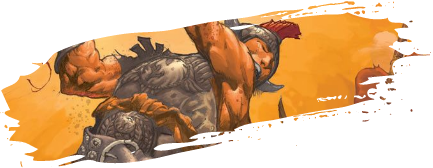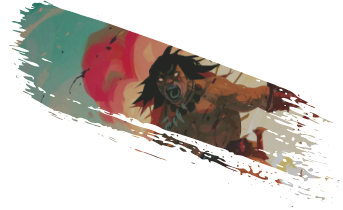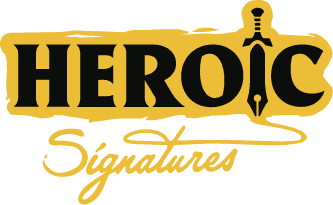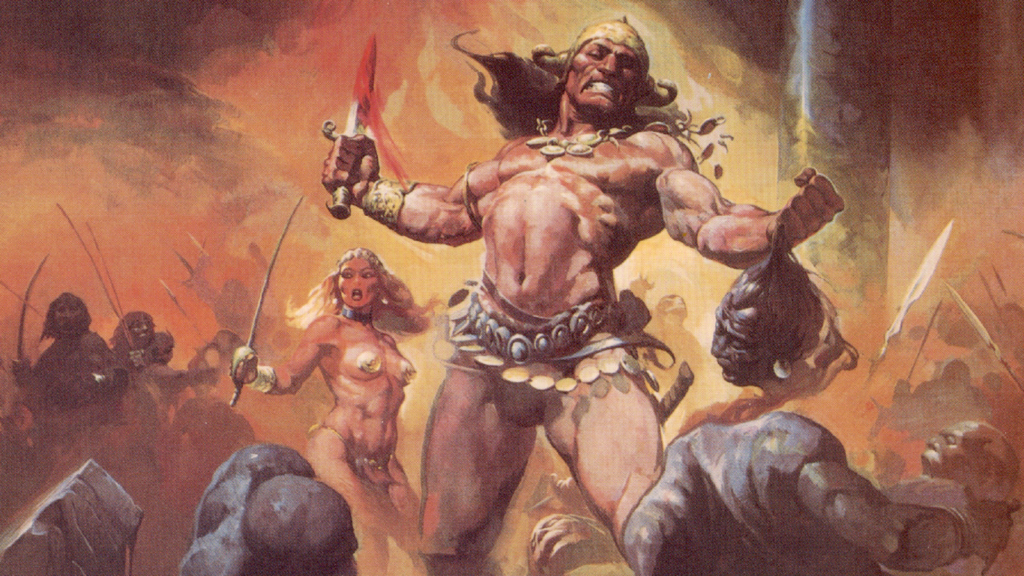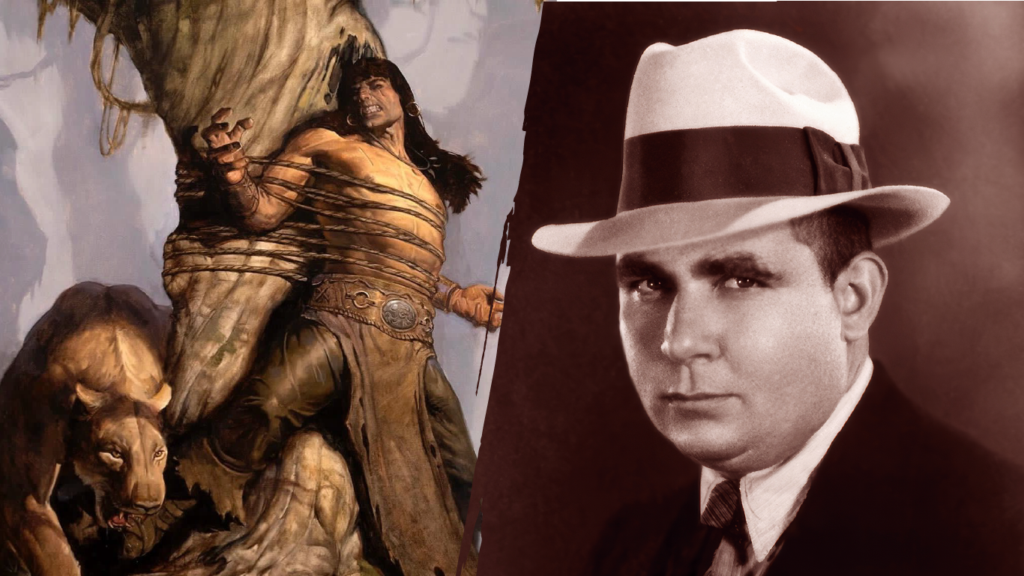
Step into the shadow-draped world of Robert E. Howard’s Hyborian Age, where myth and history intertwine in a dance of steel and sorcery. At the heart of this savage realm stands Conan the Barbarian, a figure whose name has become synonymous with untamed strength and primal cunning. But behind this legendary warrior lies a people shrouded in mystery: the Cimmerians.
Forged in the harsh crucible of their gloomy homeland, the Cimmerians emerge as one of Howard’s most fascinating creations. Their culture, a blend of historical inspirations and imaginative genius, offers a window into the very soul of the Hyborian Age. Join us as we peel back the myth to explore the enigmatic world of Conan’s people – a journey that promises to illuminate not just a fictional culture, but the enduring power of Howard’s vision.
Just who are the Cimmerians?
In the mists of antiquity, where history blurs with myth, we find the roots of Howard’s indomitable Cimmerians. These fierce warriors, hewn from the harsh landscape of their dark homeland, owe their creation to a variety of real-world inspirations, woven together by the masterful hand of Robert E. Howard.
Picture, if you will, the historical Cimmerians – nomads of the Iron Age, roaming the windswept steppes north of the Black Sea. Known to the Assyrians as the Gimirrāya and remembered in Biblical texts as the “descendants of Gomer,” these enigmatic people captured the imagination of the ancient world. But it was through the lens of Homer that Howard’s vision truly took shape, drawing upon the mythical Kimmerioi – a people shrouded in shadow, dwelling at the very threshold of the Underworld.
Yet Howard’s genius lay not in imitation, but transformation. The Hyborian Age Cimmerians emerged as a distinct culture, primarily drawing inspiration from Gaelic Celtic warrior traditions. This focus was no accident, for Howard had encountered Plutarch’s fanciful connection between the historical Black Sea Cimmerians and the Celtic Cimbri tribe. Though historically dubious, this link proved creatively fertile.
But the wellspring of inspiration ran deeper still. In the winter of 1932, as Howard’s mind grappled with the nascent character of Conan, he found himself moved by the hills near Fredericksburg, Texas. The resulting poem, “Cimmeria,” paints a vivid picture of a land “wrapped in mist and clouds,” where “bare boughs rattl[e] in the lonesome winds.” This evocative imagery, born from Howard’s own experiences, breathed life into the fictional homeland of his most famous creation.
Some scholars, like the astute Patrice Louinet, have even suggested that the very soil of Howard’s birthplace – the aptly named Dark Valley in Texas – played a role in shaping Cimmeria. Here, amidst thick forests, we can almost glimpse the “dimness of the everlasting woods” that Howard so hauntingly described.
Through this creative process, the Cimmerians emerged, their roots tangled in the rich loam of our own world’s past. It is this very tension – between the recognizable and the fantastical – that gives the Cimmerians their enduring power to captivate.
As we peel back the layers of Cimmerian society, we begin to discern the intricate web of relationships that bound this fierce people together. For in the harsh realm of Cimmeria, survival depended not just on individual strength, but on the unbreakable bonds of kinship and clan…

Cimmerian Family Life
In this gloomy realm, we can surmise that artificial constructs of civilization likely hold little sway; instead, it seems probable that primal bonds of kinship reign supreme.
Based on what we know of similar cultures, we might imagine the Cimmerian social structure as simple yet intricate, mirroring the rugged landscape that birthed it. It’s plausible that here, loyalty is akin to lifeblood. One could speculate that generations-old blood feuds carve the social landscape as surely as wind and rain sculpt the terrain. Yet, when danger looms, it’s conceivable that this same fierce devotion transforms rivals into allies, creating a formidable front.
Leadership among these people, we can infer, isn’t inherited, but likely earned through sweat and steel. It’s reasonable to think that chieftains might rise and fall based on battlefield prowess and council wisdom, their authority perhaps demanding constant proof of worth. One could imagine that failure leads to a more capable successor swiftly taking the reins.
Howard’s early notes whisper of a King Cumal, though this figure never materialized in published tales. If such unified rule existed, it may have proven fleeting—a momentary spark in the harsh Cimmerian night, possibly extinguished before true monarchy could take root.
Below the warrior elite, we might envision farmers and craftsmen toiling. Their lives, one could speculate, speak of unrelenting struggle. Yet even here, pride might burn bright. In a land where each sunrise could be seen as a victory against nature’s cruelty, mere survival could be considered an act of nobility.
While the “civilized” south embraces slavery, we know Cimmerians shun the practice. “We don’t sell our children,” Conan once declared. Still, it’s possible some clans practiced a form of thralldom, where captured foes served their conquerors—a custom perhaps tempered by the Cimmerian ethos.
As we turn our gaze to daily life in this unforgiving land, from smoke-filled chieftains’ halls to windswept heights where lone hunters might stalk their prey, we can only imagine how Crom’s children might wrest existence from fate’s unyielding grasp.

A Day in the Life of a Cimmerian
Dawn breaks reluctantly over Cimmeria. In a sturdy longhouse, a Cimmerian family stirs to life.
The man of the household, his presumably honed by years of combat and labor, might don rough-spun wool and leather. His calloused hands grasp tools for tending meager crops or a spear for the hunt. If they practiced subsistence farming, it would likely yield barely enough to survive, so his keen eyes would scan the forest’s edge, ever alert for game to supplement their stores.
His wife, no less formidable, would likely kindle the hearth fire. Her strong arms knead dough for the day’s bread, possibly a mixture of barley and whatever wild grains they’ve managed to gather. She might also tend to a small herd of sheep or goats, spinning wool in quieter moments. Given the harsh environment, a Cimmerian woman would likely be as ready to wield a blade as a distaff.
Children, hardened early by their harsh environment, would likely scatter to their tasks. Young boys might shadow their fathers, learning the arts of the hunt and battle. Girls might assist their mothers, but also train in combat, for in such a land, every hand would need to be ready to defend hearth and clan.
Meals would probably be simple affairs – perhaps porridge, game stew, or cheese from their herd. Ale, when available, would offer brief respite from the day’s toils. As shadows lengthen, the family would gather, weapons likely always within reach. Tales of ancestral glory and warnings of supernatural threats could fill the evening hours.
One might imagine the Cimmerians as a stern people, their lives a constant struggle against nature’s cruelty. Yet even in such a realm, moments of celebration would likely be necessary to pierce the gloom like shafts of sunlight through storm clouds.
The changing of seasons might even bring festivals, though these would likely be far from the raucous affairs found in more “civilized” lands. The autumn equinox, if it was celebrated, could see a solemn feast, honoring the harvest and steeling themselves for the brutal winter ahead. Weddings, possibly rare bright sparks in Cimmerian life, might unite clans in brief revelry.
Their entertainments, like everything in Cimmeria, would likely be shaped by the land itself. Contests of strength and skill – perhaps wrestling matches, axe-throwing competitions, and mock battles – could serve dual purposes of leisure and combat training. Storytelling might hold a revered place, with skalds weaving epic tales of heroes long past.
But these moments of respite would be fleeting. As night falls, a Cimmerian warrior’s hand would likely never stray far from his weapon. In this land where only the strong survive, every day could end as it began – poised on the knife’s edge between life and oblivion.

The Place of War in Cimmerian Society
Cimmerian warfare erupts like a tempest, brutal and unrelenting as the land that forged it. In battle, these warriors become living embodiments of their harsh realm—unpredictable, fierce, and utterly without mercy.
Glinting in the pale northern sun, Cimmerian weapons tell a tale of pragmatism and deadly efficiency. Iron swords, their edges honed to razor sharpness, sing a lethal song in skilled hands. Spears, crafted from highland pines, stand ready to impale foes or bring down distant prey with unerring accuracy. Axes serve dual purposes—felling trees one day, cleaving skulls the next.
But to focus solely on their arms would be folly. A Cimmerian’s deadliest weapon is their own body, honed to perfection through a lifetime of struggle. From first tottering steps to final breath, every child of Cimmeria – man and woman – learns the art of war as naturally as breathing.
Armor? Scant protection compared to the gleaming plate of southern realms. Leather, smoke-cured and battle-tested, offers mobility over fortress-like defense. Some warriors rely on ferocity alone to turn aside enemy blades.
In combat, Cimmerians forsake the rigid formations favored by “civilized” armies. They strike like wolves—swift, silent, and merciless. One moment, the forest stands silent; the next, it erupts in a maelstrom of flashing steel and blood-curdling war cries.
This seeming chaos belies a deeper strategy. Each warrior, intimately familiar with their harsh terrain, would likely be masters at using every rock and shadow to their advantage. What appears to be a disorganized retreat might swiftly turn into a devastating ambush, luring overconfident foes to their doom.
Yet for all their martial prowess, a shadow looms over every Cimmerian warrior. Their gods are grim and unyielding, offering no promises of glory in the afterlife. Each battle might be their last, each victory merely a temporary reprieve from the eternal blackness that awaits.
As the clash of steel fades and the war cries echo into silence, we turn our gaze to the forces that shape the Cimmerian soul. For in this land, the line between the natural and supernatural blurs, and ancient powers still hold sway over the hearts of men.
Religion and Magic in Cimmeria
Drawing from Howard’s writings and comparable historical beliefs, we can envision Cimmeria’s foggy peaks and drenched valleys harboring arcane secrets. In this realm, the supernatural might be a palpable force, as real as the icy wind that howls through mountain passes.
Sorcery elicits a visceral response from Cimmerians: a potent cocktail of dread and disgust. They view witchcraft as a corrupting influence, a taint best left untouched. Yet paradoxically, the mystical permeates their existence, an ever-present undercurrent beneath life’s harsh realities.
On society’s periphery, we can imagine shamans lurking—enigmatic figures who dare to traverse the boundary between worlds. Their eyes might gleam with forbidden knowledge, commanding a reluctant respect. Thus, it would be fair to speculate that a Cimmerian would rather face a charging boar than seek a shaman’s counsel unbidden.
Crom, the stoic deity, looms large in Cimmerian spirituality as described by Howard. From his lofty mountain seat, this grim god seems to dispense fate with callous indifference. Yet to call the Cimmerians’ relationship with their pantheon “worship” would be a misnomer. No ornate temples grace this land, no priests intone flowery supplications. Instead, faith appears to manifest as iron-willed self-reliance and stoic acceptance of life’s cruel vagaries.
Howard’s Cimmerian pantheon, while not fully documented, includes deities that bear striking resemblance to later Celtic gods. Conan himself invokes names like Badb, Morrigan, Macha, Nemain, and Mannanan Mac Lir in his adventures. This parallel isn’t coincidental; Howard employed a form of literary pseudo-Euhemerism, a technique where mythological figures are presented as exaggerated accounts of historical persons or events.
In this context, the Cimmerian gods could be seen as precursors to their Celtic counterparts. While we can’t say with certainty that they are identical to the later Celtic deities, their presence in Cimmerian lore can suggest a mythological lineage. These primordial names, resonant with ancient power, echo through Howard’s fictional history, foreshadowing their evolution into the gods worshipped by the Celts in our own historical record.
The Cimmerian conception of the afterlife paints a bleak portrait: a sunless realm of endless gray, where disembodied spirits wander aimlessly for eternity. This grim outlook casts a long shadow over Cimmerian culture, infusing it with a pervasive melancholy. Hope for a better existence—in this life or the next—remains scarce as summer snow in these northern climes.
Rituals, if they were observed, would likely tend towards the simple rather than the ornate. A warrior might offer a terse acknowledgment to Crom before battle, not in supplication, but as a nod to the cosmic indifference that governs all fates. The changing seasons might also prompt communal gatherings, where ancient songs would likely rise on the night air—a defiant chorus against the encroaching darkness.
As we contemplate the simplicity of Cimmerian beliefs as presented by Howard, we begin to understand the unique lens through which these hardy people likely viewed the world. And it is this worldview that would shape their interactions with the myriad cultures of the Hyborian Age.

Cimmerians’ Relationship with Other Peoples
In Howard’s depiction of the tumultuous Hyborian Age, the Cimmerians stand as a thread of unyielding iron, their presence both a bulwark against chaos and a harbinger of it.
Conflict appears to define the Cimmerian existence in Howard’s stories. Their creed, seemingly “might makes right,” echoes through every clash and skirmish. To a Cimmerian, possession is portrayed as merely a temporary state, held only as long as one has the strength to defend it. This philosophy likely sets them on a collision course with their neighbors, sparking an endless cycle of raid and reprisal.
The Vanir and Aesir, their northern kinsmen in barbarism, are presented as worthy foes. Howard paints vivid scenes of steel ringing against steel in snow-laden forests, each battle a test of will as much as martial skill. To the west, the enigmatic Picts lurk, their hit-and-run tactics described as a constant thorn in Cimmerian flanks.
Yet it is the encroachment of the “civilized” south that truly ignites Cimmerian fury in Howard’s tales. As Aquilonian borders creep northward, the highlanders are shown responding with a ferocity that shocks their would-be conquerors. Villages burn, legions shatter against the highland rocks, and the myth of Aquilonian invincibility crumbles in the face of Cimmerian resolve.
Howard’s vision of the Cimmerians’ ultimate destiny defies expectation. While mighty empires crumble and once-proud peoples fade into obscurity, the sons and daughters of Crom are depicted as enduring. They weather the storm of Turanian invasion from the east, their mountain fastnesses described as impregnable even to the horse-lords of the steppes. The Pictish tide that drowns the western lands is shown breaking against Cimmerian cliffs.
In Howard’s narrative, it is ironically the Cimmerians’ own distant kin who finally dislodge them from their ancient homeland. The Nordheimr, driven south by the encroaching glaciers of a new mini ice age, descend upon Cimmeria with the inexorable force of the very ice sheets pursuing them. This literal glacial advance serves as both the cause and the method of the Cimmerian displacement. Yet even in the face of this climatic upheaval, Howard portrays the Cimmerians as refusing to fade. Instead, they adapt and transform.
In Howard’s narrative, these nomadic conquerors eventually settle by a great inland sea. Here, the fierce blood of Cimmeria mingles with other streams, giving rise to the historical Cimmerians known to our own ancient world. Thus, Howard’s creation comes full circle, myth seamlessly blending into the misty origins of recorded history.
As we draw our journey through the realm of Cimmeria to a close, we’re left with a tantalizing paradox. For all the rich detail Howard wove into this fierce culture, the Cimmerians remain, in many ways, as enigmatic as the fog that cloaks their homeland.
Conan, the towering barbarian whose adventures have captivated generations, stands alone in Howard’s tales as the sole Cimmerian to stride across the pages of the Hyborian Age. This singular focus creates a fascinating vacuum, a negative space that beckons the imagination to fill its depths.
What other heroes might have been born in those gloomy valleys? What tales of valor and tragedy echoed in smoky longhouses on storm-wracked nights? The answers, like so much of Cimmerian lore, are left to speculation.
We catch fleeting glimpses of other Cimmerians like Conan’s father and grandfather, yet even these fragments are notable for their scarcity. In Howard’s stories, the appearance of a Cimmerian in the wider world is met with surprise, suggesting a people as rooted to their harsh homeland as the ancient pines that dot their hills.
This very insularity adds another layer to the Cimmerian mystique. Might there be great heroes, revered by their own people, whose names never reached the ears of outsiders? Legendary hunters who faced down monstrous beasts in fog-shrouded forests? Cunning chieftains who united warring clans against common foes? Tragic figures whose tales of love and loss were passed down through generations in the haunting songs of Cimmerian skalds?
The absence of these stories in Howard’s works doesn’t diminish the Cimmerians – rather, it amplifies their allure. And so, as we reluctantly take our leave of Cimmeria, we’re left with a profound appreciation for Howard’s craftsmanship.
In creating a people both vividly realized and shrouded in mystery, he’s given us a canvas upon which our own imaginations can paint epic tales yet untold. The saga of the Cimmerians, like the people themselves, refuses to be neatly contained – it lives on, a vibrant thread in the tapestry of fantasy that continues to inspire and captivate to this day.

Lo Terry
In his effort to help Heroic Signatures tell legendary stories, Lo Terry does a lot. Sometimes, that means spearheading an innovative, AI-driven tavern adventure. In others it means writing words in the voice of a mischievous merchant for people to chuckle at. It's a fun time.



